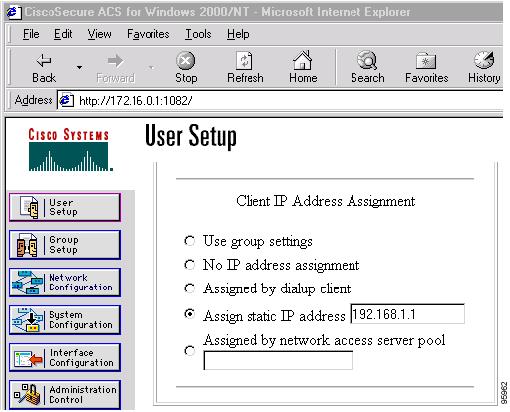Table 4. Feature Information for Easy VPN Server
|
Feature Name
|
Releases
|
Feature Information
|
|
Central Policy Push Firewall Policy Push feature
|
Cisco IOS XE Release 2.1
|
The Central Policy Push Firewall Policy Push feature was integrated for use on the Easy VPN Server.
|
|
Easy VPN Server
|
Cisco IOS XE Release 2.1
|
The Easy VPN Server feature introduces server support for the Cisco VPN Client Release 3.x and later software clients and
Cisco VPN hardware clients (such as the Cisco ASR 1000 Series Routers). This feature allows a remote end user to communicate
using IPsec with any Cisco IOS XE VPN gateway. Centrally managed IPsec policies are “pushed” to the client device by the server,
minimizing configuration by the end user.
|
|
|
Cisco IOS XE Release 2.1
|
RADIUS support for user profiles, user-based policy control, session monitoring for VPN group access, backup-gateway list,
and PFS were added.
|
|
|
Cisco IOS XE Release 2.1
|
The
netmask command was integrated for use on the Easy VPN server.
|
|
|
Cisco IOS XE Release 2.1
|
The following feature was integrated for use on the Easy VPN Server:
|
|
|
Cisco IOS XE Release 2.1
|
The following features were integrated for use on the Easy VPN Server:
-
Configuration Management Enhancements (Pushing a Configuration URL Through a Mode-Configuration Exchange)
-
Per User AAA Download with PKI
-
Syslog Message Enhancements
-
Network Admission Control for Easy VPN
-
Password Aging
-
Virtual IPsec Interface Support
|
|
|
Cisco IOS XE Release 2.1
|
The following features were integrated for use on the Easy VPN Server:
-
DHCP Client Proxy
-
Virtual Tunnel Interface Per-User Attribute Support for Easy VPN Servers.
-
Split DNS
-
Per-User Attribute Support for Easy VPN Servers
-
VRF Assignment by a AAA Server
The following commands were introduced:
crypto
aaa
attribute
list ,
debug
ip
dns ,
dhcp-server
(isakmp) ,
dhcp-timeout ,
show
ip
dns
name-list,
show
ip
dns
view, and
show
ip
dns
view-list
|
|
|
|
The following command was modified:
crypto
isakmp
client
configuration
group
|
|
|
Cisco IOS XE Release 2.1
|
The DHCP Client Proxy feature was updated to include manageability enhancements for remote access VPNs.
The following commands were modified:
clear
crypto
session,
crypto
isakmp
client
configuration
group,
debug
crypto
condition,
show
crypto
debug-condition,
show
crypto
isakmp
peers,
show
crypto
isakmp
profile,
show
crypto
isakmp
sa,
show
crypto
session
|
Glossary
AAA--authentication, authorization, and accounting. Framework of security services that provides the method for identifying
users (authentication), for remote access control (authorization), and for collecting and sending security server information
used for billing, auditing, and reporting (accounting).
aggressive mode (AM)--Mode during Internet Key Exchange negotiation. Compared to main mode (MM), AM eliminates several steps,
which makes it faster but less secure than MM. Cisco IOS XE software will respond in aggressive mode to an IKE peer that initiates
aggressive mode.
AV pair--attribute-value pair. Additional authentication and authorization information in the following format: Cisco:AVPair=“protocol:attribute=value”.
IKE--Internet Key Exchange. Hybrid protocol that implements Oakley key exchange and Skeme key exchange inside the ISAKMP
framework. Although IKE can be used with other protocols, its initial implementation is with IPsec. IKE provides authentication
of the IPsec peers, negotiates IPsec keys, and negotiates IPsec security associations.
IPsec--IP Security Protocol. Framework of open standards that provides data confidentiality, data integrity, and data authentication
between participating peers. IPsec provides these security services at the IP layer. IPsec uses IKE to handle negotiation
of protocols and algorithms based on local policy and to generate the encryption and authentication keys to be used by IPsec.
IPsec can be used to protect one or more data flows between a pair of hosts, between a pair of security gateways, or between
a security gateway and a host.
ISAKMP--Internet Security Association Key Management Protocol. Protocol framework that defines payload formats, the mechanics
of implementing a key exchange protocol, and the negotiation of a security association.
MM--main mode. Mode that is slower than aggressive mode but more secure and more flexible than aggressive mode because it
can offer an IKE peer more security proposals. The default action for IKE authentication (Rivest, Shamir, and Adelman signature
(rsa-sig), RSA encryption (rsa-encr), or preshared) is to initiate main mode.
policy
push
--Allows administrators to push policies that enforce security to the Cisco Easy VPN (software) Client and related firewall
software.
reverse route injection (RRI)--Simplified network design for VPNs on which there is a requirement for redundancy or load
balancing. RRI works with both dynamic and static crypto maps.
In the dynamic case, as remote peers establish IPsec security associations with an RRI enabled router, a static route is
created for each subnet or host protected by that remote peer. For static crypto maps, a static route is created for each
destination of an extended access-list rule.
SA--security association. Description of how two or more entities will utilize security services to communicate securely.
For example, an IPsec SA defines the encryption algorithm (if used), the authentication algorithm, and the shared session
key to be used during the IPsec connection.
Both IPsec and IKE require and use SAs to identify the parameters of their connections. IKE can negotiate and establish its
own SA. The IPsec SA is established either by IKE or by manual user configuration.
VPN
--Virtual Private Network. Framework that consists of multiple peers transmitting private data securely to one another over
an otherwise public infrastructure. In this framework, inbound and outbound network traffic is protected using protocols that
tunnel and encrypt all data. This framework permits networks to extend beyond their local topology, while remote users are
provided with the appearance and functionality of a direct network connection.






 Feedback
Feedback